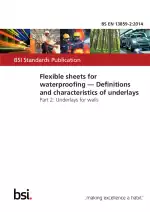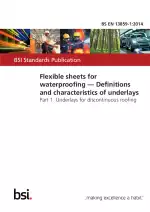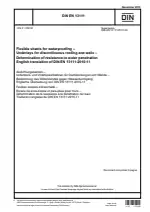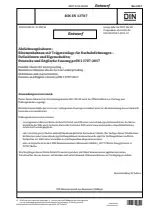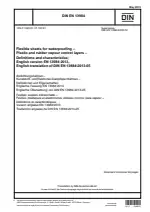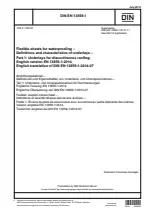Flexible Sheets for Waterproofing - Definitions and Characteristics of Underlays - Part 2: Underlays for Walls
Also Known As:
The DIN EN 13859-2 standard establishes the requirements and characteristics of flexible sheets used as underlays for walls. These underlays are designed to prevent the infiltration of wind and water from the exterior and are installed behind outside wall coverings.
The standard outlines the specific requirements that underlay materials must meet and provides test methods for assessing their performance. These requirements ensure that the underlays are able to effectively resist the penetration of wind and water, thus contributing to the overall waterproofing of the wall assembly.
Additionally, the standard includes provisions for the assessment and verification of the constancy of performance of these underlays. This entails ensuring that the underlays consistently meet the requirements outlined in the document, providing reassurance of their long-term effectiveness.
| Descriptors | Bitumen sheets, CE marking, Ceilings, Certification (approval), Characteristics, Conformity, Consistency (mechanical property), Construction, Construction materials, Constructional products, Definitions, Designations, Determination, Dimensions, Furrings, Impermeability, Marking, Plastic sheets, Properties, Protection against water from the ground, Resistance, Roof area, Roof coverings, Roof sealing, Roof sealing sheets, Roof underlays, Roofing slabs, Roofs, Sealing, Sealing means, Sheets, Sheets of elastomer, Specification, Specification (approval), Specifications, Steam brakes, Technical data sheets, Testing, Tightness, Underceilings, Underlays, Wall coverings, Walls, Water proof sheetings, Water-proof sheeting for roofs, Waterproofness, Watertightness, Bases, Pads, Railways, Freedom from holes, Density, Backing, Foundations |
| ICS Codes | 91.100.50 - Binders. Sealing materials |
| Language(s) | English |
| File Size | 798.7 KB |


